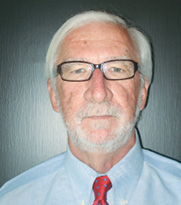When the final count for 2010 is complete, the amount of harvested corn could be an all time record; and at a minimum, the recent harvest should rank in the top five years of harvested corn with the other top five years coming from the preceding four years. With five years of record production, one would expect supplies to be high, and demand to be slowing. But just the opposite is occurring.
Increasing domestic demand by livestock and ethanol producers together with a continuing demand for U.S. agricultural products by emerging countries will continue to put upward pressure on demand and downward pressure on supply. In fact, a December 23, 2010, article in the Wall Street Journal indicated that “corn futures set a fresh 29 month high” as analysts continue to “worry the world corn crop next year won’t keep pace with demand.” This fundamental economic disequilibrium will continue to raise commodity prices that will translate into increased farm income and heightened demand for new and improved agricultural equipment.
Yet this sanguine picture does not bode well for those dealers continually chasing the elusive and ever-changing market share demands of their manufacturer. Coupled together, the irrational exuberance of farmers, the fiscal recklessness of discretionary money, the orgasmic charge that order takers get in selling a new piece of equipment, and the lack of discipline on the part of dealership management to either walk away from a low margin transaction or to manage their over inflated used equipment, present an unsettling picture for the near term.
I have long maintained that farmers are like drunken sailors in that if they make a dollar, they will likely spend $1.25. With record income, it is not surprising that demand for new equipment will continue to escalate for the foreseeable future. The problem will be, however, that as more and more farmers reap the benefits of their toil, demand for good used equipment will soften and dealers will be confronted with an excess of low hours, high priced used equipment that makes up the bulk of the dealer’s future operating cash flow.
Since free cash flow from operations is far more important to the success of a dealership than the posting of paper profits, the agricultural equipment industry could be poised to see a plethora of dealers seek an exit strategy just as the end-user basks in their record income.
To prevent this financial Armageddon, dealers would be wise to undertake the following three tactical activities. First, refrain from selling to custom cutters who are the ultimate price shoppers and who are less than meticulous in the way they run the machines. Not only are they generally looking for the lowest possible price, but they also seek the highest trade-in value even though their machines have above average hours and have been worked exceeding hard.
The second tactical activity that dealers interested in long-term survival would be wise to adopt would be to minimize the number of “rollover” transactions they accept. Several years ago I was told by a dealer from the Midwest that he had “perfected” the rollover program. Five years after that conversation, he was indicted, his manufacturer stood to lose millions, and the trail of disillusioned and disappointed customers spanned multiple states. So much for perfection!
Rolling over a new combine or tractor every year for minimal cash difference only benefits the end user. It is not uncommon to hear stories where an end-user has traded in his one-year, low hour, combine for $20,000-$24,000 cash difference. At 400 hours, this is a cost of only $50-$60 per hour. And in some cases, that’s before any multi-unit discounts or discretionary dollars. This is how you spell CHRISTMAS. Why would anyone buy the used piece when the price differential between the new and used is so minimal?
The third activity that should be implemented immediately is to get your used equipment house in order. This will require reassessing the value of each major unit. A sale price should be established that will ensure a sale within the next 90 days while simultaneously enabling the salesperson to earn a “fair” commission. Remember, positive cash flow is far more important than the posting of paper profits. If a loss were to occur, 2011 should be a good year for such an occurrence. Any loss could be used to offset the expected overall profits of the dealership thereby reducing any potential tax obligations.
With end-user demand increasing, and with equipment supplies being reduced because of Tier 4 production changes, 2011 should be a perfect time to increase the equipment sale price and, therefore, the gross margin, while concomitantly minimizing sales to custom cutters and rollover addicts. While you pick up the parts and service sales from customers within your trade area, you will have the satisfaction of watching your neighboring dealer put another nail into his/her financial coffin by chasing low margin transactions designed to increase market share while financially benefiting the end-user.







Post a comment
Report Abusive Comment